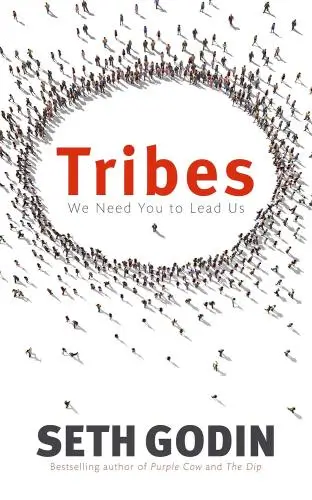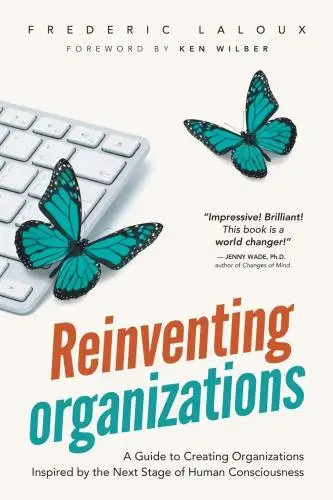
Leaders Eat Last
Why Some Teams Pull Together and Others Don't
What is Leaders Eat Last about?
Leaders Eat Last discusses the importance of creating a positive work environment based on trust and empathy. Sinek emphasizes that true leadership is about putting the needs of others before your own, which ultimately leads to a more motivated and productive team. He explores how great leaders prioritize the well-being of their employees and create a culture of safety and belonging. This book offers valuable insights on building strong teams and fostering a sense of community within organizations.
About the Author
Simon Sinek is a renowned author, speaker, and leadership expert known for his expertise in inspiring people to lead fulfilling lives and create positive change. He gained popularity with his TED Talk and subsequent book "Start With Why," which explores the importance of understanding one's purpose and motivation. Sinek has since published other books, including "Leaders Eat Last" and "The Infinite Game," which further delve into leadership principles and strategies. He has spoken at various organizations and conferences worldwide, sharing his insights on leadership, teamwork, and organizational culture. Sinek's work emphasizes the significance of empathy, authenticity, and trust in building successful and sustainable relationships and businesses.
10 Key Ideas of Leaders Eat Last
Foster a Circle of Safety to Enhance Team Performance
Creating a secure environment where team members feel safe to express themselves without fear of repercussion encourages innovation and collaboration. This circle of safety leads to higher levels of trust and cooperation, as individuals are more likely to take risks and innovate when they feel protected. The reasoning behind this is rooted in our evolutionary need for belonging and security; when these needs are met, people can focus on collective goals rather than individual survival.
Learn DeeperCreate a Feedback-Friendly Environment: Encourage open communication by regularly asking for feedback and showing appreciation for it, regardless of whether it's positive or negative. This can be done through anonymous surveys, one-on-one meetings, or feedback sessions.
Establish Regular Team-Building Activities: Organize activities that are not work-related to help team members bond and build trust. This could range from casual lunches to team retreats or even simple virtual games for remote teams.
Promote Transparency: Share as much information as possible about the state of the organization, upcoming changes, and challenges. This helps in building trust and making everyone feel included and secure about their place in the company.
Implement a Mentorship Program: Pairing less experienced team members with mentors not only facilitates personal and professional growth but also strengthens the sense of belonging and safety within the team.
- Example
A tech startup implements a 'No Blame' culture where mistakes are seen as opportunities for learning rather than reasons for punishment. This encourages team members to innovate without fear of failure.
- Example
A marketing firm holds monthly 'Town Hall' meetings where employees at all levels are encouraged to voice concerns, share ideas, and ask questions directly to the leadership team. This practice fosters a sense of transparency and trust within the organization.
Practice Empathetic Leadership to Understand Your Team
Empathy in leadership involves actively listening to team members, understanding their perspectives, and acknowledging their feelings. This approach builds stronger relationships and fosters a supportive culture that can boost morale and productivity. By putting yourself in your team's shoes, you can make more informed decisions that consider their well-being, leading to a more engaged and committed workforce.
Learn DeeperStart Your Meetings with a Personal Check-in: At the beginning of team meetings, allocate a few minutes for each member to share how they're feeling or what's on their mind. This practice not only helps in understanding their current state but also fosters a culture of openness and trust.
Implement 'Open Door' Virtual Hours: Even if you're leading a remote team, you can set aside specific times during the week when team members can 'drop in' for a chat via video call. This mimics the open-door policy in physical offices and shows your team that you're accessible and willing to listen.
Actively Practice Active Listening: When a team member is speaking to you, whether it's about a work issue or a personal matter, ensure you're fully present. Avoid distractions, maintain eye contact, and paraphrase their points to confirm your understanding. This demonstrates that you value their input and are engaged in the conversation.
Provide Specific, Positive Feedback Regularly: Make it a habit to acknowledge and appreciate your team members' efforts and achievements. Be specific about what you're praising them for, as this will make them feel seen and valued, boosting their morale and engagement.
- Example
During a team meeting, a leader notices that one of the members seems quieter than usual. After the meeting, the leader privately asks the member if everything is okay, showing genuine concern and willingness to support, embodying empathetic leadership.
- Example
A project manager realizes that the team is stressed about an upcoming deadline. Instead of pushing them harder, the manager arranges a brief meeting to discuss everyone's workload, openly talks about the challenges, and collaboratively finds solutions to reduce the pressure, demonstrating empathy and understanding.
Prioritize the Well-Being of Your Team Over Numbers
Valuing employees' health and happiness over short-term financial gains demonstrates a commitment to their overall well-being. This long-term investment in people rather than just profits can lead to increased loyalty, lower turnover rates, and ultimately, better financial outcomes. When employees feel valued and cared for, they are more likely to go above and beyond for the organization, driving success from the ground up.
Learn DeeperCommunicate Openly and Regularly: Make it a habit to have open lines of communication with your team. Schedule regular check-ins not just about work progress but also to understand their challenges and well-being.
Recognize and Reward Efforts: Show appreciation for hard work and achievements. This can be through public recognition, bonuses, or even simple thank-you notes. It's important that employees feel their efforts are noticed and valued.
Invest in Employee Development: Offer opportunities for professional growth such as training programs, workshops, or mentorship. This demonstrates a commitment to their career advancement and personal development.
Create a Supportive Work Environment: Foster a culture where team members feel safe to express ideas, ask for help, and take risks. Encourage collaboration and support among team members to build a strong, united front.
Prioritize Work-Life Balance: Encourage employees to maintain a healthy balance between work and personal life. This could mean flexible working hours, remote work options, or simply respecting boundaries and not expecting work outside of normal hours.
- Example
A tech company implements 'Wellness Wednesdays' where the first hour of the workday is dedicated to mental health activities, including meditation sessions or guest speakers on work-life balance.
- Example
A marketing firm introduces a 'Kudos Board' where employees can post notes of thanks or recognition for their colleagues' hard work, fostering a culture of appreciation and boosting morale.
Lead by Example to Inspire and Motivate Your Team
Actions often speak louder than words. By embodying the values and behaviors you wish to see in your team, you set a powerful example that can inspire and motivate others. This includes showing vulnerability, admitting mistakes, and demonstrating a commitment to personal growth. Leading by example fosters respect and encourages a culture of accountability and continuous improvement.
Learn DeeperModel the Behavior You Want to See: Start by reflecting on the values and behaviors that are important for your team's success. Make a conscious effort to demonstrate these in your own actions every day. For example, if punctuality is a value you cherish, ensure you're always on time for meetings.
Admit Mistakes Openly: When you make a mistake, admit it to your team openly. This not only shows your human side but also encourages a culture where mistakes are seen as opportunities for learning rather than reasons for punishment.
Share Your Learning Journey: Regularly share what you're learning, whether it's from books, courses, or personal experiences. This can inspire your team to pursue their own learning and growth, reinforcing a culture of continuous improvement.
Provide Constructive Feedback with Empathy: When giving feedback, focus on the behavior, not the person, and always offer suggestions for improvement. Doing so in a compassionate manner encourages development while maintaining respect and dignity.
- Example
A manager notices their team has been missing deadlines. Instead of assigning blame, they call a meeting to openly discuss what went wrong, including their own oversight in project planning. Together, they develop a more realistic timeline and set up weekly check-ins to track progress.
- Example
During a team meeting, a leader shares a recent challenge they faced in balancing client expectations with team capabilities. They discuss how they navigated the situation, the mistakes made, and the lessons learned, encouraging the team to share their own experiences and solutions.
Deeper knowledge. Personal growth. Unlocked.
Unlock this book's key ideas and 100+ more. Learn with quick, impactful summaries.
Read Full SummarySign up and read for free!
Leaders Eat Last Summary: Common Questions
Experience Personalized Book Summaries, Today!
Discover a new way to gain knowledge, and save time.
Sign up for our 7-day trial now.
No Credit Card Needed

Similar Books

The Founder's Dilemmas
Noam Wasserman
Traction
Gino Wickman
Tribes
Seth Godin
Management 3.0
Jurgen Appelo
The Goal
Eliyahu M Goldratt
Only the Paranoid Survive
Andrew S. Grove
Execution
Larry Bossidy
Reinventing Organizations
Frederic Laloux
The Ideal Team Player
Patrick M. Lencioni
Multipliers
Liz Wiseman
Team of Teams
General Stanley McChrystal
The Toyota Way
Jeffrey LikerTrending Summaries

Peak
Anders Ericsson
Never Split the Difference
Chris Voss
Smart Brevity
Jim VandeHei
The Psychology of Money
Morgan Housel
The First 90 Days
Michael D. Watkins
Atomic Habits
James Clear
Thinking, Fast and Slow
Daniel Kahneman
The Body Keeps the Score
Bessel van der Kolk M.D.
The Power of Regret
Daniel H. Pink
The Compound Effect
Darren Hardy
How to Win Friends & Influence People
Dale Carnegie
Eat That Frog!
Brian Tracy
The Magic of Thinking Big
David J. Schwartz
Drive
Daniel H. Pink
Essentialism
Greg McKeownNew Books

The Millionaire Fastlane
MJ DeMarco
Losing My Virginity
Richard Branson
Venture Deals
Brad Feld
48 Days to the Work You Love
Dan Miller
Anything You Want
Derek Sivers
Running Lean
Ash Maurya
Blitzscaling
Reid Hoffman
The Founder's Dilemmas
Noam Wasserman
Founders at Work
Jessica Livingston
The Startup Owner's Manual
Steve Blank
The Art of the Start 2.0
Guy Kawasaki
The Four Steps to the Epiphany
Steve Blank
Flash Boys
Michael Lewis
Crush It!
Gary Vaynerchuk
